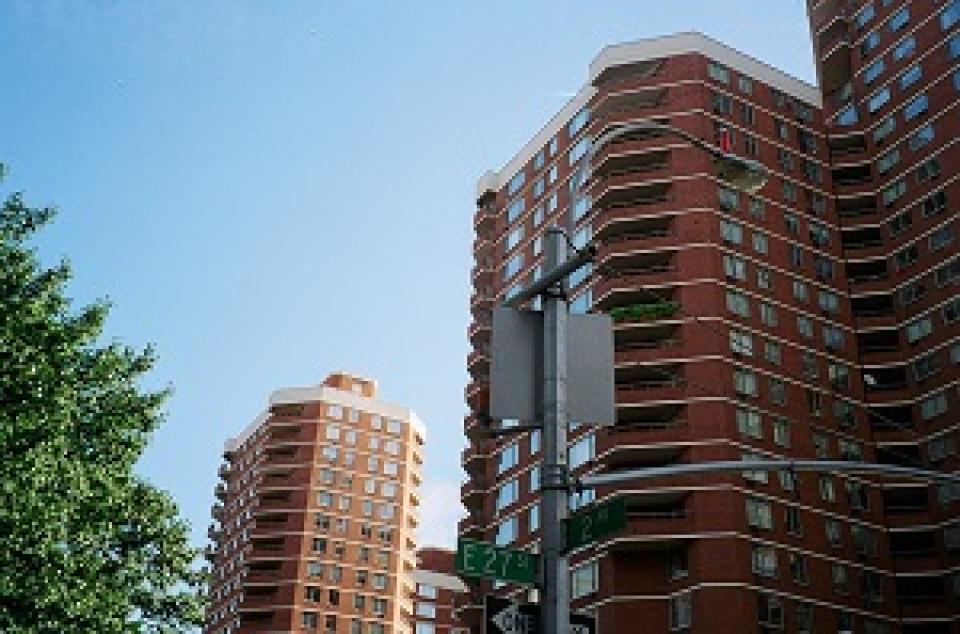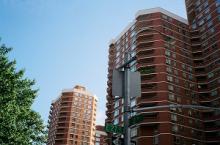
New York City is looking to take a bite out of the Big Apple’s broadband gap for residents living in newly built affordable housing.
Last month, the New York City Department of Housing Preservation and Development (HPD) released revised Design Guidelines requiring new affordable housing projects that use city funds to be “designed and constructed to provide high-quality [I]nternet access and service as part of their lease contract and at no additional cost to the tenant.”
That means all new affordable housing buildings that use city funds must be wired, “to the maximum extent feasible,” to offer free high-speed Internet access that supports “four simultaneous moderate users or devices, with preferred system capacity of 100 Megabits per Second (Mbps) upload and download, per unit.”
The guidelines further stipulate that residents should also be given the option to increase their household’s level of service “at their own cost.”
“As we continue to produce affordable housing at record pace, this Administration is equally committed to ensuring that housing contributes to creating a more equitable and sustainable city. That is why our new Design Guidelines incorporate lessons learned from COVID-19 and follow best practices to promote equity, health, and sustainability,” HPD Commissioner Louise Carroll said in a press release when the new guidelines were announced.
HPD officials said the health and economic fall-out of the pandemic had a “devastating” and “disproportionate” impact on low-income city residents, particularly communities of color.

A Pressing Need
According to the Mayor’s Office of the Chief Technology Officer, 29% of New York City households, nearly half of whom are living in poverty, do not have a high-speed Internet subscription at home, “preventing many low-income New Yorkers from utilizing online learning, teleworking, and accessing telehealth, and emergency services.”
And when it comes to race and ethnicity in relation to broadband access, a 2018 study published by the Mayor’s Office of the Chief Technology Officer, found that Black and Hispanic city residents have “significantly lower rates” of high-speed home Internet service than White or Asian New Yorkers: 32% of Black city residents and 33% of Hispanic residents lack a home broadband connection, while 21% of White city residents and 23% of Asian residents lack access to broadband.
As reported by Next City, the new affordable housing Design Guidelines – developed in conjunction with the city’s Task Force on Racial Inclusion & Equity and affordable housing developers – takes aim at addressing this broadband access and affordability gap.
President and CEO of the New York State Association for Affordable Housing (NYSAFAH) Jolie Milstein told Next City that the new guidelines are “a fairly broad, high-level requirement” and is something NYSAFAH is lobbying to be adopted state-wide.
Finding the Right Match
Martin Dunn, president of the Brooklyn-based housing developer Dunn Development Corp. and member of NYSAFAH’s executive committee, told Next City that the logistics of connecting affordable housing units isn’t the difficult part. The challenge will be choosing Internet Service Providers and figuring out the criteria for group service bids, adding that the estimated cost of connection is about $25-$35 per unit, per month, which can be offset by a larger subsidy from HPD and other funding sources.
That recurring cost is higher than we have seen elsewhere. In discussions with fiber ISPs who serve upwards of 10,000 subscribers or more, recurring costs are often in the neighborhood of $10-$15 per month. The San Francisco-based Internet Service Provider Monkeybrains developed a model in partnership with the City of San Francisco to provide broadband access to San Franciscans living in public housing for a cost of $10 per unit. The cost to connect in San Francisco’s case, however, is the operating expense per unit, per month. It may be that the estimated cost of connection per unit, per month in New York City’s initiative includes the capital expenses. We have generally recommended that the one-time capital costs to connect the unit be paid for separately in order to more clearly delineate one-time costs from recurring operational costs.
“The city is approaching this like they should,” Dunn told Next City. “We have requirements for ventilation and how much natural light you have and how warm you keep [an apartment], and now there’s a requirement that people have access to the [I]nternet at a certain speed. It’s treating it like it’s a basic need.”
Meanwhile, the New York State Legislature recently enacted a state budget that requires all Internet Service Providers who serve 20,000 customers or more in New York to offer a 25/3 Megabits per second broadband service option for eligible low-income state residents for $15 per month.
Immediately after Gov. Andrew Cuomo announced the proposal in his State of the State address in January, it was criticized by lawmakers from both sides of the aisle. Some Democratic lawmakers saw it as a band-aid approach with Assemblyman Pat Burke saying Cuomo’s proposal didn’t do “nearly enough,” while Republican State Senator George Borrello said it was “a nice idea” but didn’t address “the oppressive taxes and fees that are being placed on these broadband providers.”
Inline image by Flickr user Phipps Houses CCY by 2.0








